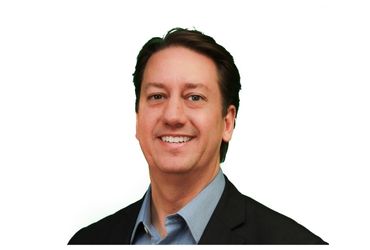Don’t Tell Me to Be Patient
By Doug Tolley

A quick Google search of the origin of the word patient in healthcare yields some interesting results; many articles look something like this:
“Patient comes from the Latin “patiens,” from “patior,” to suffer or bear. The patient, in this language, is truly passive—bearing whatever suffering is necessary and tolerating patiently the interventions of the outside expert.” 1
The word doctor comes from the Latin word docere which means “to teach.” We respect the doctor because of their superior training and medical knowledge.
Putting this relationship together, the patient is supposed to silently suffer and patiently wait for the esteemed and learned instructor who will fix their ailments. I believe this relationship has been broken since the 14th century when the terms patient and doctor first gained common usage.
Is there any other industry where consumers pay for the opportunity to “be patient” and “wait” (the rooms are called waiting rooms for heaven’s sake) for the “teacher” to dispense their knowledge. This seems absurd. The only other setting I can think of where we have this type of relationship is in a college classroom. We have to start talking differently about our medical interactions. And the word patient should be changed to something that restores balance to the relationship.
I found an article in defense of the word patient. It reads in part:
“By calling people patients I do not believe that we are making them sicker or denying them their rights, as has been popularized; on the contrary, we are helping to continue the unique doctor patient relationship. This relationship has evolved over centuries and is built on mutual respect, knowledge, trust, shared values and openness.” 2
This quote outlines the problem in perfect clarity: this clinician’s frame of reference, feels like an outdated view of the relationship. The article says that “mutual respect, knowledge, trust, shared values, and openness” are the foundations of the doctor patient relationship, but these factors are absent in many current medical visits.
Mutual Respect
Mutual respect comes from working together to solve a problem. Most of my medical interactions are not based on working together; a busy clinician with too many people to see and too much paperwork, including electronic medical record charting, blazes in the room, quickly ascertains what is wrong, writes a script, and hustles off to the next exam room. There isn’t much of an opportunity to work together – sometimes, there is barely any interaction at all.
Knowledge
Knowledge is tricky – there is a lot of medical mis-information available on the internet. Sorting through the junk to find the truth is not very easy. On the other hand, medical information is exponentially growing, and clinicians are burnt out as is. Elsevier claims that medical knowledge is now doubling every 73 days!
“Medical knowledge has been expanding exponentially. Whereas the doubling time was an estimated 50 years back in 1950, it accelerated to 7 years in 1980, 3.5 years in 2010, and a projected 73 days by 2020, according to a 2011 study in Transactions of the American Clinical and Climatological Association.”
My doctor likely cannot keep up with all this information deluge. It is possible that I have read something they haven’t. The days of the medical profession being the “keepers of knowledge” are over. Doctors and the consumers of healthcare should work together to devise solutions because consumers are better informed today than ever before in the history of medicine. Working together, clinicians and consumers can sort through the noise and find solutions cooperatively.
Shared values, Openness and Trust
Shared values is the next mentioned tenet of the relationship. I have no idea what my doctor’s values are. Is she a holistic healer? Does she believe in alternative treatments? Do her religious preferences influence the care I receive? Is the doctor focused on pharmaceutical treatments primarily? What is her preference towards surgery as a primary option? Does the doctor know any of these things about me? I think listing shared values in a relationship that is at best minutes-long and feels transactional in nature is almost impossible. The only value it seems we share is my insurance coverage – do I have it and do they take the brand I have.
Openness is a goal we should all strive for, and doctors do try to make sure we are being open and honest in answering their questions. But real openness comes when there is an actual relationship, and from a certain comfort level that develops over time. While some are lucky enough to get to know their doctor eventually, I frankly have a better relationship with my butcher at the local supermarket than I do with my doctor. Openness requires quality communication. electronic medical record use, lack of time, and the imbalance between a doctor in a white coat and a person in a paper gown don’t foster quality communication or openness.
Trust would be a natural result of mutual respect, knowledge, shared values, and openness. If the other 4 qualities of the relationship existed trust would follow. Because mutual respect, knowledge, shared values, and openness are missing, trust is eroded. I want to trust my doctor but without the other factors, this would be blind trust. Lack of trust leads to hesitation on the part of the person receiving care and that isn’t good for anyone’s health. Consumers of medical care are no longer willing to place blind trust in their providers. COVID, the availability of the internet, the proliferation of medical advertisements, biased coverage in the media, information and misinformation from our government officials – all of these factors have eroded the trust in the healthcare process and doctor/consumer relationship.
In order to restore trust, medical professionals need to reset their half of the equation and really work to build mutual respect, knowledge exchange, shared values and openness. One first step would be to reset the antiquated concept of a doctor and a patient. We need to start thinking of medical professionals and consumers working together for the overall health of the individual. I am no longer willing to be patient and wait to be fixed. There are many clinicians who want to partner with me on my health journey – the trick is to find the right one. Clinicians who really want to build a relationship of trust probably already use language that is more balanced than doctor and patient.

About Doug Tolley Chief Revenue Officer
Doug has spent his career in sales, sales leadership, business development and executive leadership. Doug has worked in mining, education, healthcare, telecommunications, and banking.
Prior to joining Dedalus, Doug was the GM and SVP of the Emerging Business Unit at KLAS research. His team launched 4 new products at KLAS during his tenure there.
Doug graduated from BYU with an MBA in 2017 and stays connected to BYU as an adjunct professor and as the co-founder of the first EMBA scholarship foundation at BYU. To date, the foundation has given 3 scholarships to single-mothers and minority EMBA students who experienced significant hardships while in the program.
Doug has presented around the world at trade shows, government agency strategy sessions, user’s groups, and regional associations on topics ranging from unified communications, healthcare IT adoption, battlefield IT challenges, business process and implementation, and investment strategies. A father of 7 children and proud grandpa to 5 grandkids, his leisure time is spent in the outdoors with family somewhere in the mountains, at a national park, or near a lake.